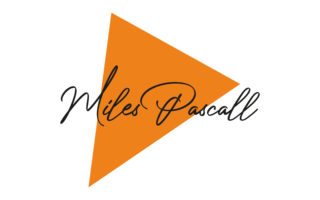ARNAUD DOLMEN – ADJUSTING
RELEASE DATE: JANUARY, 28TH 2022
Arnaud Dolmen is an acclaimed jazz artist, drummer, and composer. Originally from Guadeloupe, now based in Paris, he studied drum ka from the age of five, then drums at Atelier Marcel Lollia, under Georges Troupé. As a teenager, he was part of the Kimbòl Youth Orchestra and studied later at the Dante Agostini drum school. Shortly after graduating, he began his professional career on the national and international scene. Dolmen has collaborated with different artists in various musical styles, and from 2006 to 2015, he co-led bands Zetliyo, FDH Trio, and Nonoexperiment. He has performed worldwide alongside Jacques Schwarz-Bart, Bojan Z, Olivier Ker Ourio, Alfredo Rodriguez, Mario Canonge, Naïssam Jalal, Laurent de Wilde, David Linx, Samy Thiébault, Jonathan Jurion, and more. He has recorded more than 80 albums and composed for series and films. His debut album, released in 2017, was “Tonbé Lévé,” which received critical acclaim. He was named “Revelation of The Year” by Jazz Magazine and “Artist To Watch” by Jazzwise.
“Adjusting” questions our interconnection and our human experience in a world as beautiful as it is noisy.
“The Gap” opens the album, with bass heralding ferocious drums and saxes working in harmony, creating a theme, under and over which the drums work, proving you can use drums as the main harmonic element, creating a core that makes a link and dialogue between the percussive and instrumental elements. The sax rises to solo during the second half, but the drums never lose their grip on dictating how the track evolves, the rhythm pointing to changes and alterations in beats.
“SQN” features the accordion of Vincent Peirani, played with speed and working with the saxophones. The drums create intricate, noise-some rhythms which change and add depths and layers with echoes and thrums. Montana’s piano work is outstanding, as is the accordion on this track and the ensemble creates a thoroughbred of a number. If ever I thought, remotely, the accordion was not an exciting instrument, Peirani changed my mind. Outstanding
“Carvanet” is a quieter number with sax and double bass in contemplative conversation at the start before layers are added one by one. The solo sax creates sonic landscapes across the top, soaring away, exploring and pushing the track ever upwards both aurally and musically. The solo bass introduces the drum and sax dialogue and continues underneath, lending support and texture to the energised drums, inspiring the sax to respond with a corresponding energy increase—a devastatingly beautiful track.
“Ajisteman” features the superb vocals of Haitian singer Moonlight Benjamin whose husky, multi-register voice lends class and emotion over the musicians’ lines. The piano offers up a beautiful solo, with drums ceaselessly pounding, introducing the changes in rhythm and tempo. This track – and the stunning vocals – ends all too soon.
“Ti Moun Gaya” begins with bass and percussion, creating a profoundly atmospheric introduction, into which the sax drops in the breathy, laid-back theme to which the bass responds. The track builds into a beautiful soundscape, with each instrument leading in turn, all the while backed by a steadfast heartbeat of the drums.
“For Real” sees interaction between piano and drums, with melodic sax for the first third, a change to contrapuntal timings before an improvised, free-flowing section where bass, piano, and drums work together and flow around the chords in the piano line. Some wonderfully worked disharmonies are sown in the descending piano chords before the sax picks up and runs away with the melody, re-imagining the theme and keeping it to the end.
“Resonance” features the flute of Naissam Jamal. The atmospheric opening conjured up by the crashing drums and delicate piano is echoed in the melody from the flute. The lyrical flute takes the listener high and then soft and low, to different landscapes of the mind, especially with her voice coming through in the flute notes—a dreamy number, yet with a sense of energy fizzing just beneath the surface.
“Hey Cousin” is a playful escapade with chopping changes, syncopation, and rhythmic slides, the piano and drums changing places to evolve a sort of swap and re-swap harmonic undertone. Just before the four-minute mark, the sax melody alters the feel of the number, and it rides waves of sounds towards its finish
“Ka Sa Te Ke Bay” verges on easy listening in some places – for this group anyhow, but the explorative melodies and emphatic delivery of the sax in the second half save it from being too easy on the ears.
“Graj Ou Toumblack” opens with thunking drums, over which the sax enters, offering responsive replies to the drums’ phrasing. The sax is astounding on this number, as is the piano line, particularly in the closing phrases, with the piano meeting drum rhythms. The track is full of syncopation and counterpoint, making it full of interest and energy, which holds the attention right the way through.
” Drole De Moment” is powerful, rhythmic, and dancy with harmonised saxes, creating a third tone line in places adding deeper texture. The drums under the saxes are just incredible – never stopping for a moment, the rhythms and volume rising, falling, rising again. You hear mainly the drums and saxes in the latter part of the number, but the bass also introduces its own ideas—incredible music.
“Les Oublie.e.s.” features Dolmen using Bouladjel – a vocal technique that imitates drums of Gwoka music of Guadeloupe, which is extraordinary in itself but the sax that accompanies it is just as remarkable. A short and very sweet finish to the album.
This album is rich in colour and soundscapes. Each composition has stand-alone qualities, with the album as a whole rooted in jazz aesthetics while exploring freer performance techniques.
There is confidence in the music and a sense of freedom. Yet, the compositional elements are also apparent – especially when you hear some of the incredible harmonics going on between drum and sax – the note tones of the drum being taken like that of a strung or plucked instrument and used as a harmonic. Completely brilliant. Each listen reveals another nuance in the music, which you missed before, so it sounds afresh. Polyrhythms, syncopation, and a compositional element that demonstrates a keen sense of more profound harmonies are all here. There are some points where the saxes are dueting where the third tone is created – that spot when two melodies meet to create a third tone without a third instrument being needed -and this works to create additional texture. This music is steeped in jazz traditions and nuance yet offers a direct, relevant, and modern approach, as might be expected from a young leader with such vision.
There is a coming together of Dolmen’s musical journey thus far, his Gwoka culture, and an ear for modern acceptability. He makes no excuse for introducing sudden changes and unpredictable elements, alongside elements deeply rooted in traditional jazz, employing a delightful combination of juxtaposed, superimposed, yet interweaved musical layers.
I agree with Jazz Magazine – definitely a revelation.
Personnel
Arnaud Dolmen – Composition, drums, bouladjel
Leonardo Montana- Piano
Samuel F’Hima- Double bass
Francesca Geminiani – Saxophone ( 7 & 12)
Ricardo Izquierdo – Saxophone (1, 3, 4, 5 & 11)
Adrien Sanchez – Saxophone (12)
Guests
Vincent Peirani – Acordion
Moonlight Benjamin – Vocals
Naissam Jalal – flute
Recorded at Studion De Meudon
recording, Mix, Mastering, Julien Basseres
Label – Gaya Music Production
Disatribution – L’Autre distribution
Out 28/1/22




